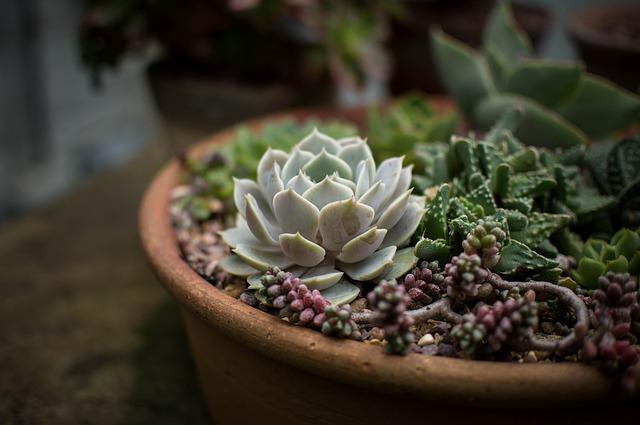Having succulents around the home enhances the beauty of your environment. Not only are they easy to grow, but they also do not need much care.
Succulents are generally hardy plants that can withstand rainy conditions, but there are a few things to keep in mind to ensure their health and longevity, such as avoiding overwatering, providing adequate drainage, and protecting them from strong winds and temperature fluctuations.
As the rainy season approaches, plant owners prefer to keep their plants indoors. Usually, many people ask me the same question—should I bring my succulents inside when it rains?
Should I Bring My Succulents Inside When It Rains
Yes, it is better to bring your succulents inside when it rains. Although a little rainwater is beneficial to the plants, heavy rainfall can destroy them.
Therefore, if you live in a place where rain falls constantly and heavily, keep your succulents indoors.
Perhaps you live in an environment where the rain pours heavily all the time; don’t panic. In this situation, you’ll need to make sure your succulents don’t get rot by taking the right steps.
So, how do you protect your succulents from too much rain?
Read further to learn more!
How To Protect Succulents From Too Much Rain
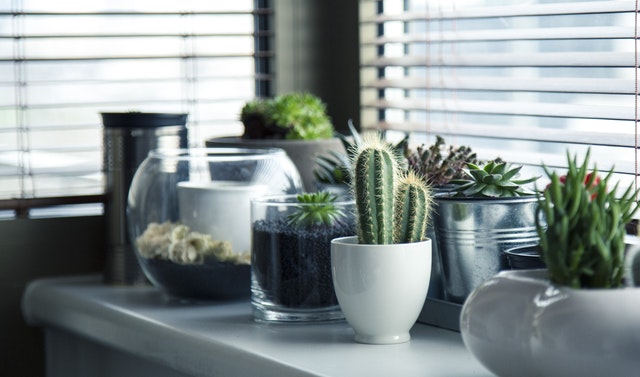
Understandably, you wouldn’t be able to bring your succulents inside when it rains if they are planted outdoors. Similarly, you may need to leave the plants outdoors for personal reasons.
Understanding the Impact of Rain on Succulents
While succulents are generally hardy plants, it’s important to consider the effects of rain on their health and well-being. While a little rainwater can be beneficial, heavy rainfall can actually be detrimental to succulents. It can lead to overwatering, which can cause root rot and other issues.
Therefore, it’s generally advisable to bring your succulents inside when it rains, especially if you live in an area with constant and heavy rainfall. However, if your succulents are planted outdoors or you have personal reasons for keeping them outside during rain, there are steps you can take to protect them.
1. Buy Good Pots
Preferably, get pots with drainage holes to prevent root rot and over-watering. Clay pots are excellent choices because they allow proper air and moisture circulation through their walls.
Also, these pots help the soil dry out quickly, which is good for the roots of succulents.
The choice of pot plays a crucial role in the health of your succulents, especially during rainy periods. Opting for pots with drainage holes is highly recommended to prevent water from pooling and causing root rot.
Clay pots are particularly beneficial for succulents as they allow for proper air and moisture circulation. Their porous nature helps the soil dry out quickly, which is beneficial for succulent roots. By selecting the right pot, you can provide adequate drainage and prevent issues associated with excessive rainwater.
2. Prune The Succulents
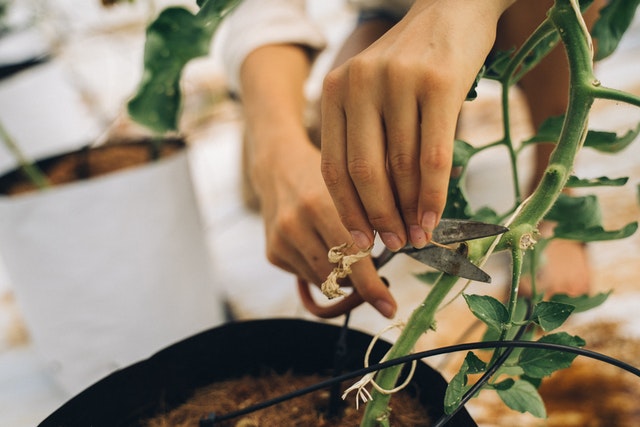
Get rid of all the dead leaves and stems around or under the succulents. Most times, these dead leaves trap water beneath the plants, resulting in soil moisture and bacteria growth.
Constantly removing all dead and infected parts of the plants prevents these problems.
Regular pruning and removal of dead leaves and stems is essential for the health and longevity of succulents, particularly during rainy seasons. Dead plant material can trap water and create an environment conducive to soil moisture and bacterial growth, leading to various issues.
By consistently removing dead and infected parts of the plants, you can prevent these problems and promote the overall health of your succulents.
3. Do Not Touch The Succulent Farina
Farina are white or bluish silver coatings on the leaves of succulents such as Echeveria, Graptoveria, and Kalanchoe.
During the rainy season, farina helps the succulent repel water and protects the plant from too much sun.
If you don’t handle the farina carefully, they can be removed easily, thereby exposing the plants to rot or sunburn.
Often, touching the farina causes them to brush away quickly. And this is why you must avoid touching them.
4. Monitor the Weather Forecast
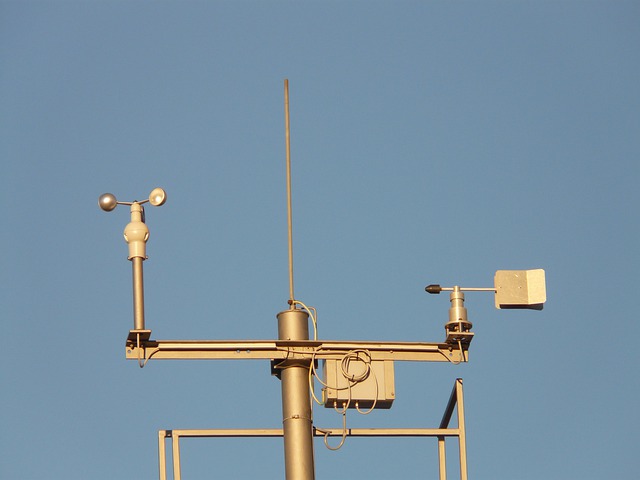
Paying attention to the weather forecast helps you prepare for unusual changes. This way, you will prepare for heavy or frequent rainfall.
There are apps on the internet that have been designed to predict the weather. Fortunately, you can download some reliable ones on the internet for free.
Keeping an eye on weather forecasts is crucial for succulent care during rainy periods. It allows you to prepare for heavy or frequent rainfall and take necessary precautions to protect your succulents.
There are various reliable weather forecast apps available online that can provide accurate predictions. By staying informed about upcoming weather conditions, you can better safeguard your succulents from excessive rain and its potential consequences.
5. Use Hydrogen Peroxide
When you apply hydrogen peroxide to the plant, it is absorbed into the soil, and the plant’s oxygen level increases. A moderate amount of oxygen makes the succulent roots healthy and firm.
Not only that, the hydrogen peroxide helps to prevent fungal infections.
Hydrogen peroxide can be a helpful tool in succulent care, particularly during rainy periods. When applied to the plant, hydrogen peroxide is absorbed into the soil, increasing the oxygen level around the roots.
This promotes healthy root growth and helps prevent fungal infections. Using hydrogen peroxide in moderation can contribute to the overall health and resilience of your succulents, especially when dealing with excessive rainwater.
6. Use Plant Covers For Outdoor Succulents
Consider using umbrellas, a UV plastic sheet, or a tent for outdoor succulents. Moreover, you can use a polycarbonate sheet, a tarp, or a shelter for these plants.
One major benefit of these plant covers is that they help to protect the succulents from excess water. As a result, the succulents have a lower risk of root rot.
Whether the succulents are planted in the ground or placed in a pot, it doesn’t matter; just make sure they are well-covered.
What Should You Do After The Rain?
Relax if you forgot to bring your succulents inside and they are now filled with rainwater. There are certain things you need to do to ensure your plants remain healthy.
Follow these 3 simple tips:
1. Pour Out The Excess Rainwater
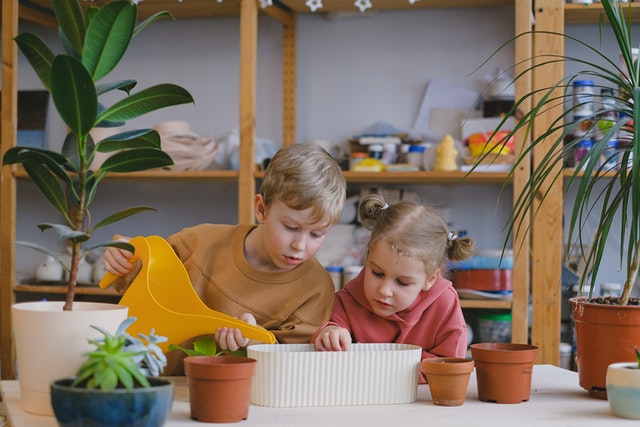
If you’re using pots with no drainage holes, pour out the rainwater residue in them. This will help the soil dry out quickly. It will also prevent the succulents from getting too wet, which causes root rot.
2. Change The Position Of The Pots
Move the plant pots to a sunny area in your garden. Also, remember to remove the cover you used to shield the succulents from excess water. Within a short time, the plants will dry out from exposure to the sun.
3. Wipe Off Water From The Leaves
Keep in mind that these plants rot quickly when they are inside water for a long time. So, wipe off all water residue from the succulent leaves. Do this for potted ones or the ones planted in the ground.
Learn more about succulents:
If your succulents have been exposed to rainwater and are now filled with excess moisture, there are steps you can take to ensure their well-being. Pouring out any remaining rainwater from pots without drainage holes is crucial to prevent waterlogging and root rot.
Changing the position of the pots to a sunny area in your garden allows the plants to dry out more quickly. Lastly, wiping off water residue from the succulent leaves helps prevent rot and keeps the plants healthy.
By following these post-raincare practices, you can mitigate any potential damage caused by excessive rainwater.
Conclusion
When it comes to rain and succulents, it’s generally recommended to bring them indoors to protect them from heavy rainfall. However, if that’s not possible, there are several measures you can take to safeguard your succulents.
Choosing pots with drainage holes, pruning dead plant material, avoiding touching the protective farina, monitoring weather forecasts, using hydrogen peroxide, and employing plant covers can all contribute to the well-being of your succulents during rainy periods.
Additionally, implementing post-rain care practices such as pouring out excess rainwater, changing the position of pots, and wiping off water residue from leaves helps prevent issues like root rot and promotes succulent health.
By being proactive and mindful of the impact of rain on succulents, you can ensure their longevity and beauty in your home or garden.
Frequently Asked Questions
When Should I Bring My Succulents Inside?
It is best to bring your succulents indoors during the fall. Most succulents thrive well in hot and arid environments. Suddenly exposing them to the cold weather can be harsh for the plants.
Naturally, succulents store enough water in their stems, trunks, and leaves. So, when you expose the plants to a cold temperature, they won’t be able to handle it. In the long run, the plants will wither.
Can You Leave Potted Succulents Outside?
Yes, it is better to leave your potted succulents outside in the sun. They grow healthily in sunny environments with warm climates. Even when you don’t spend so much time tending to the plants, they still look perfect.
As the rainy season draws near, do not leave the potted succulents outside. Although a little rainwater can help to wash the dirt away from its leaves, heavy rainfall may damage the plants.
You can grow the succulents in containers or on the ground, depending on your personal preference. While it is good to water these plants, avoid over-watering them during the winter months.
Should Succulents Be Indoors Or Outdoors?
Whether you should keep your succulents indoors or outdoors depends on where you live. Succulents do not thrive well in places with too much moisture or cold. Regardless, you can plant them indoors or outdoors, as long as the climate is favorable.
Furthermore, ensure you plant the succulents in the right soil, and add fertilizers during summer. Likewise, allow the plants to get enough sunlight, and let the soil get enough water.

Hey, I’m Lisa and I’ve been an avid gardener for over 30 years. I love writing, talking and living in the garden! Feel free to connect with me on my socials below

